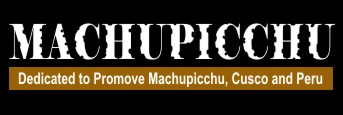|
1.-
Discovery
2.- Hiram Bingham
3.- Giesecke
4.- In fact, It was not
vitcos
5.- Government Expeditions
6.- Cultural Pillaging
Albert Giesecke, a compatriot of his and rector
of the local University told him that in January 1911 he had taken a
trip towards the Convencion Valley invited by the rich landlord Mr.
Braulio Polo y la Borda, who told Bingham that on the hills facing
Mandor there were ancient constructions covered by vegetation where
cattle were frequently lost. Moreover, Giesecke had spoken to
Melchor Arteaga, a half-breed man who rented farmlands in the area
and had seen the Inkan buildings and who had promised to take him to
the ruins during the dry season. The information was reserved for
Bingham, and on July 23, 1911 he showed up in Mandor along with a
policeman, Sergeant Carrasco, who escorted him by order of the
Peruvian government, and two members of his expedition. Over there
they met Melchor Arteaga who would be the guide in order to get to
the Inkan City. Early the next day it was cold and showering, and
Arteaga did not like the idea of going up the ruins, his attitude
changed positively when Bingham offered to pay him one silver “sol”,
after examining the field they decided to climb up by the sector
where nowadays is the zigzagging road. After the exhausting climb,
at noon they arrived at another hut where they found Anacleto
Alvarez and Toribio Recharte, two humble peasants who along with
their families lived in the area about four years and cultivated the
pre-Hispanic farming terraces. After a short break, they provided an
eight year old boy as the guide for Bingham and his military escort
in order to get the Inkan buildings that were partially covered with
entangled vegetation. That was how Bingham, at 35 years old,
stumbled onto Machupicchu; a fortuitous happening that made manifest
a great "discovery". That day, the time he spent exploring, taking
pictures, drawing and describing Machupicchu was about four hours.
Later he continued with his journey arriving even as far as
Rosaspata, Ñust'a Hisp'ana, Pampaconas and Espiritu Pampa; places
that apparently did not attract the explorer so much.
|

Machupicchu |
